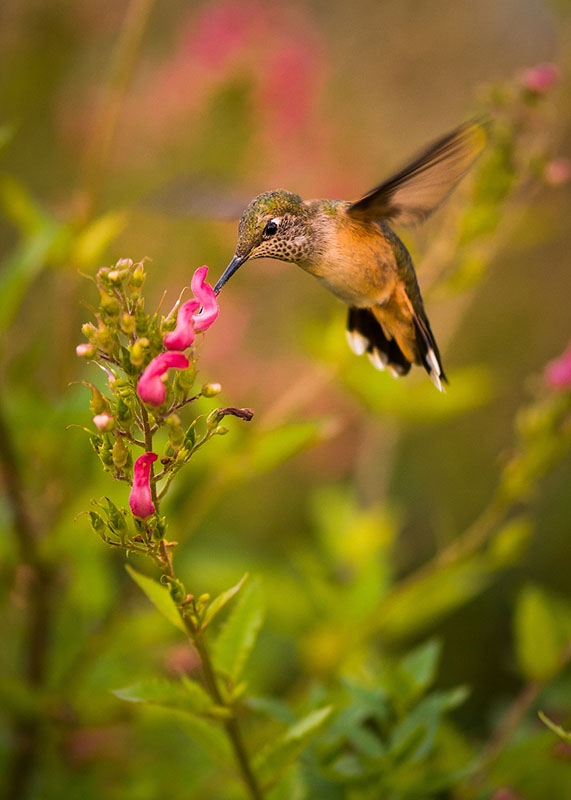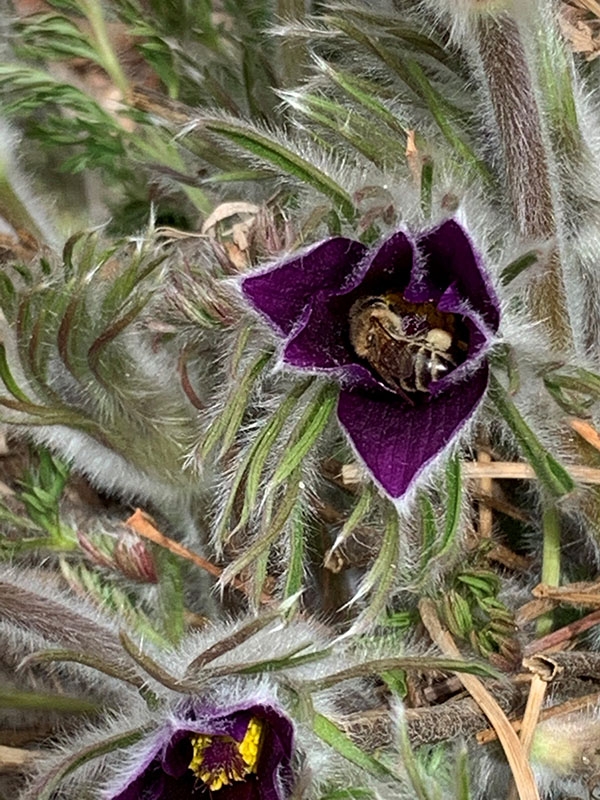Operation Pollination: Support Vs. Attract
Now that it really feels like spring, some of our early pollinators are more visible: Honeybees have been active on warm days for a while, I’ve heard of multiple hummingbird sightings in the Denver area, bumblebee queens are foraging and building their nests, and mason bees should emerge soon as well.
We often talk about how to attract pollinators, such as butterflies and hummingbirds, to our gardens. I want to suggest a shift in thinking from attracting them to supporting them. Hummingbirds, for example, need more than nectar. We’re told to plant red, tubular-shaped flowers to attract hummingbirds, but the information stops there. While that nectar is an important source of energy for them, they need more than that. Hummingbirds also need protein. In fact, research suggests they need protein as much as, if not more than, nectar.

Where do they get protein? Insects. This means that, in addition to nectar-rich flowers, our garden should promote healthy insect life. Reduce or eliminate insecticides/pesticides. Also, utilize complex plantings – mature trees (evergreen and deciduous), understory trees and shrubs, perennials, grasses – to create a multi-story garden. It doesn’t have to be big. But interplanting layers of these different types of plants creates a more complex environment to foster support for all stages of the hummingbird’s life.
This also supports insect life. Hummingbirds catch insects in flight, forage for them on plant foliage and steal them out of spiderwebs (maybe eat the spider, too). It provides them nesting opportunities and materials. Hummingbirds like to use spider webs in building their nests. Don’t forget to provide some water, whether it’s a pond, birdbath or just a bowl of fresh water. (And keep the cat inside!)

Pasque flower
What’s blooming?
Sand phlox (Phlox bifida), creeping Oregon grape (Berberis repens), manzanita (Arctostaphylos), serviceberry (Amelanchier), Pasque flower (Pulsatilla patens).
What else can you do right now?
Read “Pollinators of Native Plants” by Heather Holm and pick at least one new plant to add to your garden to feed pollinators in each season – spring, summer and fall.
Comments
Great insights! I will keep…
Great insights! I will keep this information in mind when working on new gardens. Thank you!
Add new comment